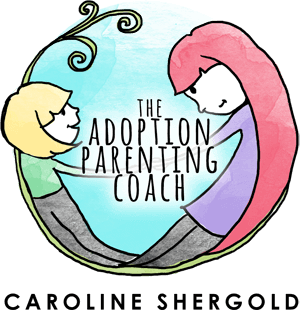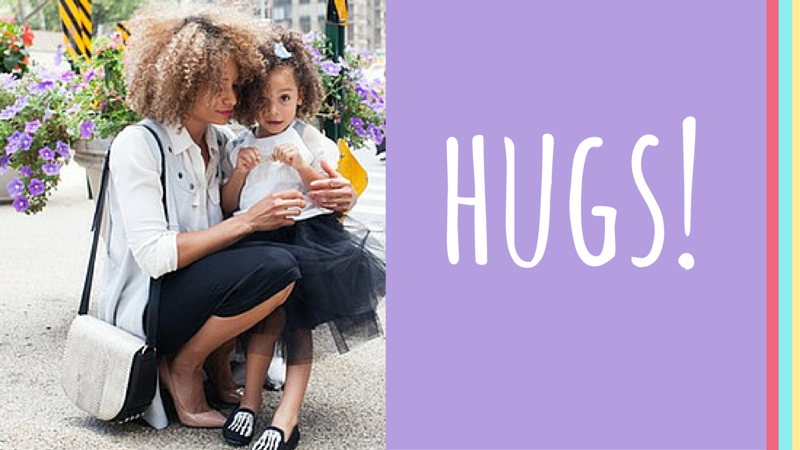Hugs are wonderful. I love giving and receiving a hug. Hugs are like a yummy medicine. They can make us feel safe, comforted, like we belong, that we are loved, wanted, accepted, forgiven and soothed. Studies show that hugs can reduce anxiety, depression and high blood pressure.
Are you about to start introductions? Then one of the things you are probably imagining is that first hug. If you are in introductions now, after everything you have been through and know they have been through, and here you are at last with your child in front of you then the thing you want to do more than anything is hug them. So, it can be hard to find that your child does not really want to hug.
When we met our 3 adopted children they were 1, 2 and 3 and were all not far off having birthdays. During introductions they happily threw themselves all over us, climbed us like a climbing frame and hugged us without a thought. Some children are naturally demonstrative. Were ours? Adopted children who have been in the system and moved from one foster home to another often have adults who they don’t know hug them. When a child is moved into yet another foster home I’m sure for some foster carers they hug to show they care, to welcome and sooth the child. It’s done to reassure them and the child. It may well be what the child needs and yet, they learn that it’s OK to hug a stranger.
I know for some children hugging is experienced as being intrusive either because of past abuse or because they are totally aware you are a stranger and it doesn’t feel OK. When you are doing your introductions or your child is settling in be mindful of hugging. I’m not saying do not hug, just be mindful. Be mindful of their non-verbal language. Are they rigid or soft? Lean away or lean in? Remember you may have the title of mummy or daddy but you are a stranger.
Ask before you hug, ‘would you like a hug?’ Observe them being hugged by foster family, how do they react? Do they react the same with you? If they go soft and return hugs and lean in with foster parents but go rigid with you. That’s OK. They know them and they don’t know you. You are a stranger and they may well feel a bit frightened. Getting to know each other and be comfortable together takes time and I don’t just mean a couple of weeks. Some children will hug you happily whilst at the foster carers and that all changes once they move to their new home.
If you find your child shys away from hugging find other ways to sooth, reassure. A little stroke on the head or face, a hand on the shoulder and a gentle squeeze. High fives are popular in non huggers. Whatever you choose to do, again watch your child’s reaction.
Our three were happy to hug during introductions at the foster carers. Once they came home and the foster carers left it changed for one of our children. He became very tense, watchful and stiff as a board if you hugged him those first few weeks. He was having to assimilate yet another move, more loss, all these new strangers, new house, new things and a whole new routine. We were hugging the others and he would watch from across the room. Gradually he came for hugs indirectly whilst reading a story as he would snuggle up and I’d put my arm round him. These were soft hugs that he could accept for a longer period of time.
Otherwise his hugs were rigid. He’d request them by putting his arms out but he couldn’t quite bring himself to relax into a hug. So as soon as he started to pull away we would let go so he felt totally in control. You should always let go when someone wants to stop hugging, but reality is we are often chatting or thinking and perhaps not on the alert to when someone wants to stop. But I mean we were mindful of his fear so we stayed alert to his non-verbal cues that said he’d had enough and responded immediately. This way he felt in control and safe. Now he can do soft cuddles, but even now we still get rigid hugs at times.
Sometime we know our child’s history and we know they are reluctant to touch or too open to touch and we know why. For others, alarm bells can start to ring if your child is reluctant. There can be all sorts of reasons such as your just one new person too many, they need time to get to know you or there birth experience may impact there feelings around touch.
I was in labour from the early hours until late evening with our birth daughter. It was only after her birth that I was told her blood pressure had kept dropping. I had a cessarian and she was born with a groove all round her head where she had been pressing against my cervix trying to get out. It took a little while for that groove to go. When we put her in her car seat she was very unsettle and cried. She did not enjoy being hugged. As she grew she would always want to be sat on my knee without being hugged. She would pull away from hugs, confusing people especially 8 year old girls who always wanted to hug her because she was so cute. As she got older she much preferred to do a high five than a hug. We always felt this was because she had felt such discomfort during her birth than hugging triggered a body memory of that time and made her feel trapped.
We never stopped hugging her but we were very mindful of her feelings and never forced a hug or prolonged a hug. She began to hug more at about the age of three and loves a cuddle now. She still doesn’t like to feel trapped though, this shows when we tell her off. If I hold her wrist it triggers a negative reaction as being told off feels hard and she feels trapped. We were able to accept who she was and how her birth experience impacted her and she has gradually worked out in her own time that hugs can feel lovely.
Now, for us adopters it is not possible usually to know our child’s birth story or all the things that have happened to them. I just wanted to share this story so that you can be reassured that there can be other reason other than sinister ones as to why our children are not keen on hugging.


Trackbacks/Pingbacks